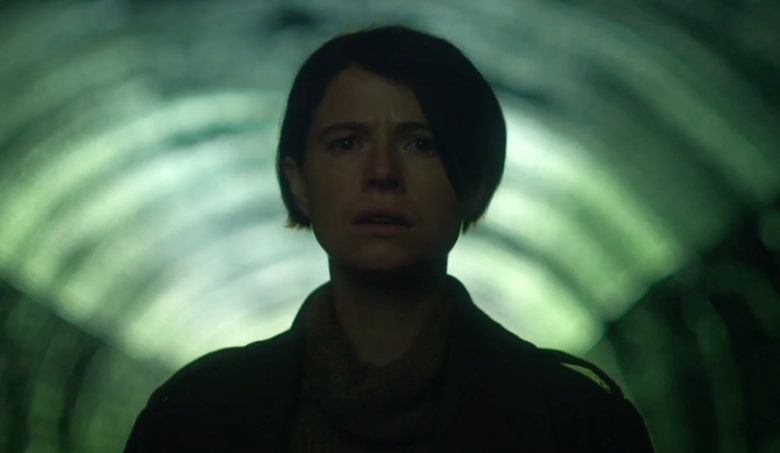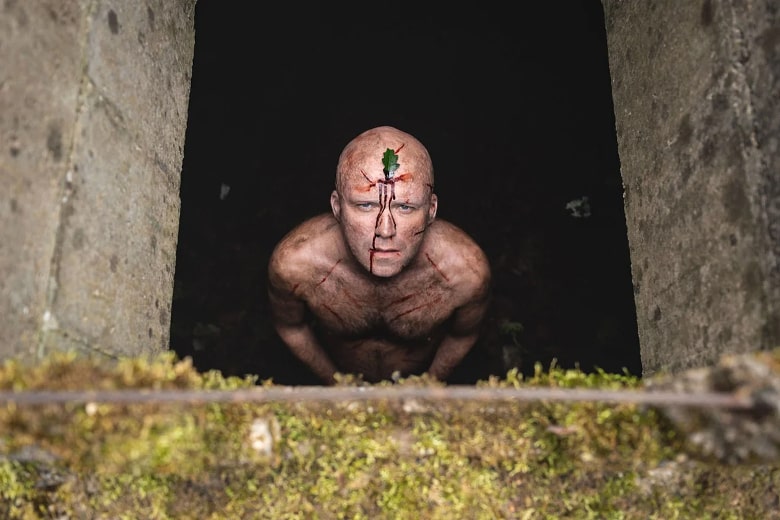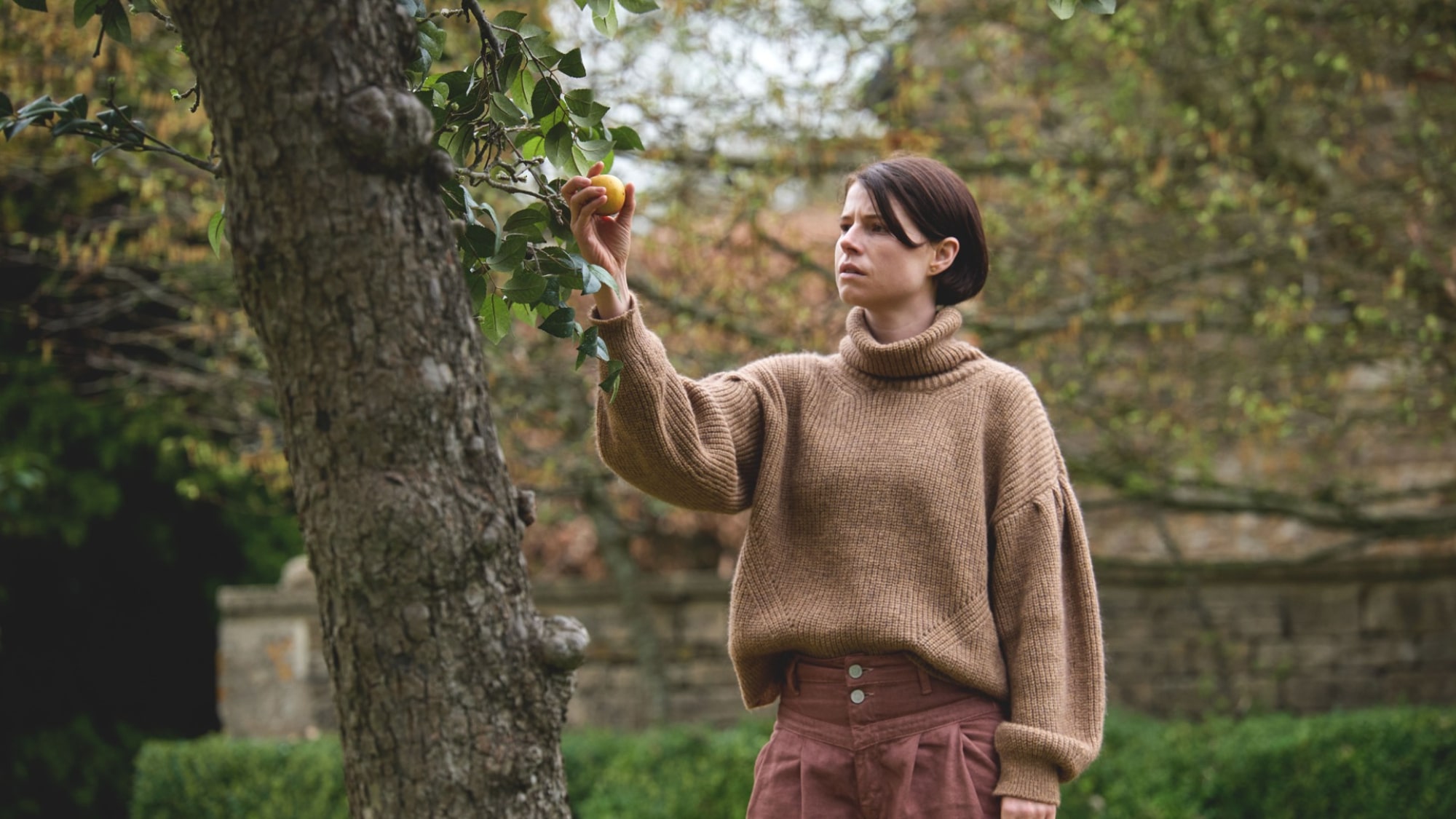Horror cinema is my go-to. Like horror literature, I gobble up everything horror cinema has to offer, from the campy and cheesy to the macabre and disturbing. While horror’s pantheon is littered with greats that do not get their props for being icons of cinema en generale (yes, I’m talking about The Strangers), it too is a padded genre of quick cash grabs and slasher-by-number rip-offs that seek to make a quick buck.
Still, both are pleasant in their own way. We know what we’re getting when we buy a ticket for a film whose trailer only included a killer tree with a butcher knife sellotaped to its branch (not a real movie, but it sounds like one, right?). But a new type of film is creeping into the horror genre. And by creeping, I mean stomping in with big bloody boots on and demanding to speak to the manager all while looking you up and down and asking if you’ve recycled today. Let’s explain the movie MEN.
MEN Movie Synopsis
When Harper Marlowe (played by Jessie Buckley) finds her marriage splattered all over the pavement, she decides to retreat into the English countryside to process, revalidate, and find the new direction her life will follow. However, on a walk through some ominous looking woods, she finds herself face to face with a naked rambler (so far so British, to be fair). Yet when she returns to the country house she’s staying at, she finds that same rambler picking up apples (scrumping) from the tree in the garden….
MEN’s Visceral Use of Overt Subtext
And it’s really at this bloody apple tree that is, as AA Dowd puts it, the beginning of Alex Garland’s “dissertation.”

From this shot at the beginning of the movie MEN, explained overtly is the religious (and it pains me to continue writing this) “subtext” that becomes as in your face as a brass band playing Lady Gaga songs at six a.m. on a Sunday morning right outside your bedroom window. The painfully obvious association between Harper Marlowe and the eponymous Eve becomes a hard fought slog through the film. And don’t even get me started on Rory Kinnear’s characters (yes, multiple! Read Andy Lea’s breakdown of his role here, I simply don’t have the patience to write it here).
While Garland’s commentary is current, vital, and very fitting of our Post-Roe-vs-Wade world (though the film was written acted, and released before this ruling), it is bogged down in Rory-centred (unintentional) humour and clumsily attacks a central thought in most Western societies formed around Christianity: that Original Sin is solely the responsibility of the woman.
I won’t spoil the film for you, but there is a sequence towards the film’s end that perfectly sums up exactly why I call Garland’s handling of reversing the roles around Original Sin “clumsy”. And, yes, it does involve bum holes.
Subtext as Overtext in the Movie MEN Explained
While “overtext” is not a word in the strictest sense (it would simply be “text”), I use it here as there is an undercurrent in Garland’s film that I haven’t seen mentioned anywhere else…and that is that Harper may not be a stand in for Eve at all…but Lilith.
I say this because of a recurring shot throughout the film of a particularly disturbing carving on the Holy Water font of the little village’s church. While it could be a carving of any number of demons, I feel that Garland’s connection to attacking and dismantling misogyny would lend itself to this interpretation. And, in doing so, his almost pornographic use of what I’m calling “Overtext” could all be a misdirect, and a fully intentional critique laboured to serve as an even more dire warning of how we, as a society, handle issues around misogyny, by focussing on the consequences and repercussions on the male. And as many reviews and breakdowns of the films prove, if this was Garland’s intention, it has worked.

Lilith then becomes synonymous with Harper as a second scene proves (SPOILER in 3,2,1…) when the friend Harper spends most of the film talking with via video chat turns out to be pregnant. In this viewing of the film, it is Harper’s friend that is Eve and Harper herself who is Lilith. With one key difference, this version of Eve is now without sin. The murders, violence, and bloody chaos of the films last act become something that Eve is completely excluded from. In this version, Lilith is not excluded from the narrative, she is the narrative, and she makes sure that she takes Adam down with her. Eve, then, has no one to be subservient to, and is free to become the start of a cycle of women free of the scarlet letter that is Original Sin.
Concluding Thoughts
While I’ll admit that the last section of this article is conjecture founded from nothing more than my own interpretation of clues I have conjured from the film, I’d usher each of you into your viewing of the film (if the bum holes part didn’t put you off) with a basic grasp of the Adam and Eve story.
I did not enjoy this film, that’s true. But I have never in my (now) thirty years of living seen a film quite like this. And while a sensationalist idea of this movie being “The Death of Subtext in Horror Cinema” may not be fully qualified with movie MEN explained, there is a worrying trend in modern horror cinema that supposes a lack of intertextuality in us, the consumers, that we must rally up and sally forth against. While not every horror film needs to be peeled apart for metaphors on the Vietnam War or the ramifications of terrorism in our societies, the ones that allow us to do the peeling become all the more delicious from allowing us to do the work.
— FOUNDATIONS OF HORROR —
Further explore these subgenres and tropes. more>>
#Psychological horror | #Religious horror | Losing your sanity is crazy

So, horror makers of the world, let us do our own peeling for goodness’ sake!
Last Updated on July 9, 2022.


1 Comment